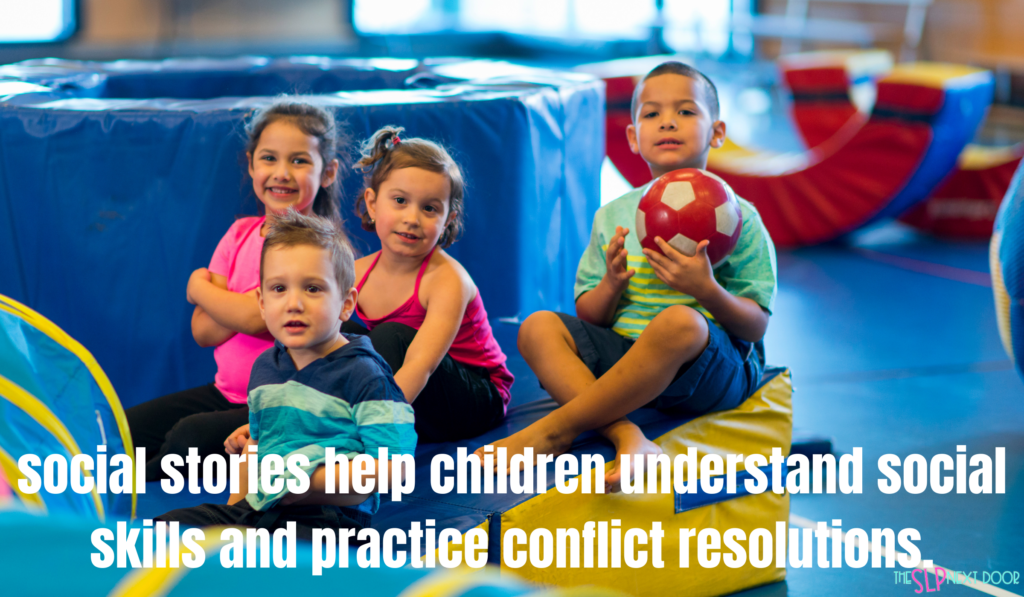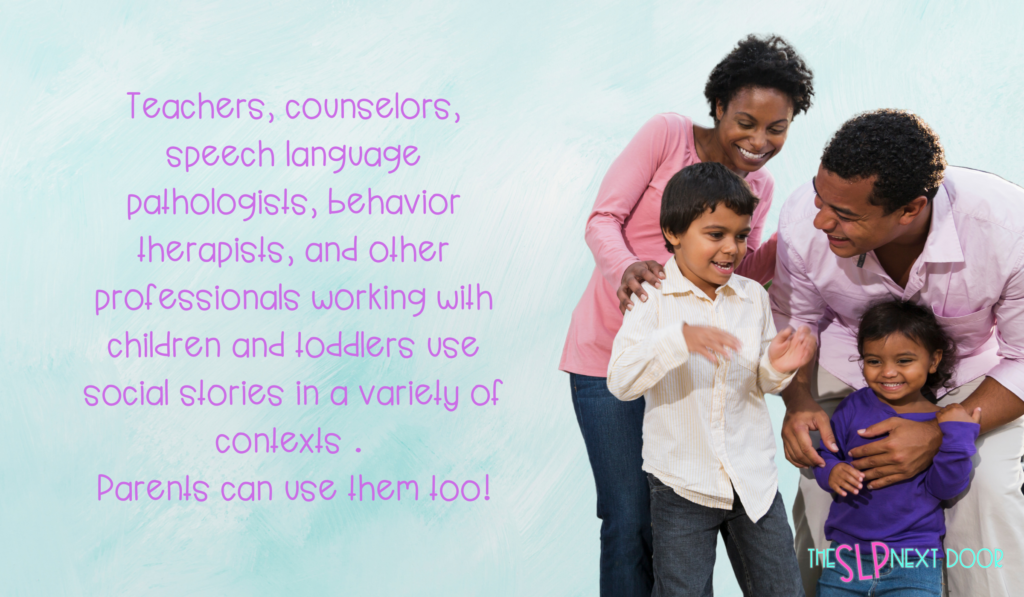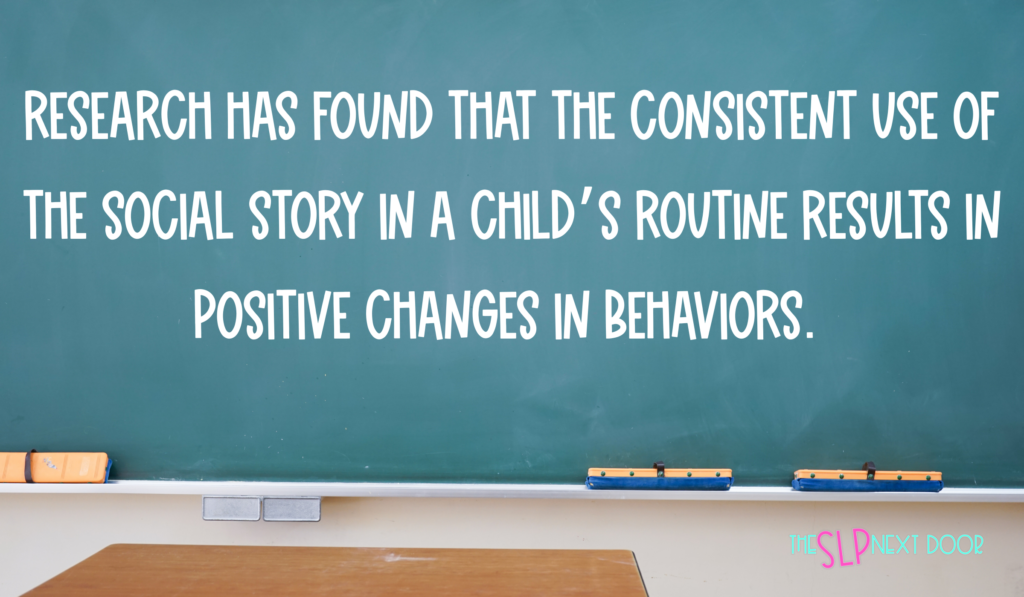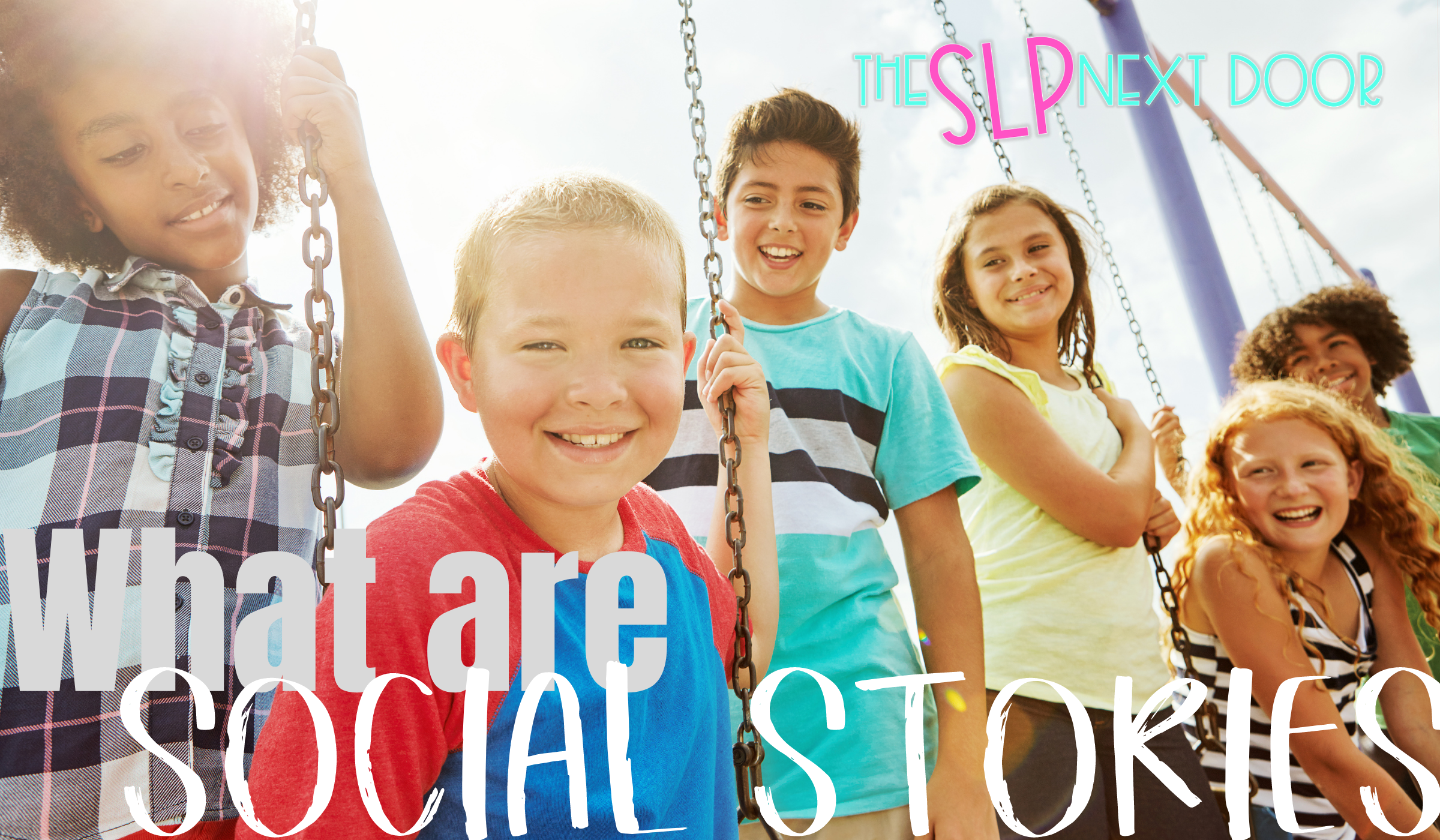What is a social story? Social stories were created by Carol Gray. She created Social Stories for her students to help them understand information they had been missing in school. You can find a variety of social stories through a quick google search- or you find them directly from an author herself at the bottom of this post! Teachers, counselors, speech language pathologists, behavior therapists, and other professionals working with toddlers and children use them in a variety of contexts and situations.
Guess, what?! Parents can use them too!

Who benefits from social stories?
The short answer to this question: everyone.
Social stories are commonly found and used in special education classrooms and with toddlers [children] with disabilities. But the truth is, social stories should be used in every early childhood setting. They help everyone!
Social stories help toddlers [children] understand social skills, provide conflict resolutions for a variety of situations, demonstrate new skills, and explain new experiences! Social socials may also help see things from someone else’s point of view.

Why use social stories?
Because they work!
No, really! Just incase I haven’t proven my point already… Research shows that reading social stories to those experiencing difficulties in certain situations is, in fact, beneficial.
Why?
Because social stories are designed to explain things in an easy to understand way. PLUS they talk about how to respond to situations or how to use different behaviors.

When can I use social stories?
Introduce social stories at anytime you suspect or see (a) a behavior happening, (b) the potential for some bad reactions to a situation, (c) before changing routines. Some social stories also include visuals and helpful handouts to be used as additional support.

How do I use social stories?
Social stories must become part of your daily routine. Research has found that the consistent use of the social story in routine (classroom or home) results in positive changes in behaviors.
For example, if your toddler [or child] has problems eating in restaurants: you can find and begin to read a social story about restaurants.
Read it every day, a few days before you go to the restaurant, and the day you go to the restaurant. Carry the story with you for visual reminders of what they are supposed to do. Consistency is the key.
Similarly, use social stories for different behaviors: when you see the behavior occur, allow for de-escalation time. Then, talk about what happened. At this point, you would implement the social story. Most importantly, read the story daily to remind your toddler [child].
Social stories are awesome and being that they are available in a huuuuuge variety of contexts, can be extremely beneficial when it comes to, unexpected behaviors, routine changes or new experiences!
Next time you find yourself in the middle of a meltdown or consoling an anxious toddler, try a social story!
aaaaand Here’s something you will LOVE! You can find a whole library of social stories made by Tara with Autism Little Learners that cover just about any topic you can imagine here! Tara is a SLP and has specialized in Autism for over 20 years.



3 Responses